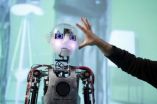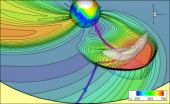(Press-News.org) A study by experts at the University of Exeter has revealed that couples with similar personalities make much better parents than those with different dispositions – at least in the world of zebra finches.
Researchers found birds expressing strong personality traits, such as aggressive behaviour or a willingness to explore, did a much better job of raising young if they had a like-minded partner. Where couples were markedly different in personality, chicks didn't fare as well – being less well-fed and in poorer condition.
The research paper, published in the journal Animal Behaviour, isn't able to give a definitive reason for the parenting benefits of matched personalities – but authors say it could be down to improved cooperation and coordination of effort.
Dr Sasha Dall, an author of the study and part of the University of Exeter's Centre for Ecology and Conservation, said: "The personality differences we focused on with these birds reflected how they go about their daily lives.
"In the case of zebra finches, to be good parents you need to be able to coordinate your behaviour so that while one parent is searching for food, the other is feeding the chick. It's a lot easier to co-ordinate your behaviour if you're similar in the way you go about things."
For the study, researchers focused in on the 'personalities' of a group of zebra finches. They were able to establish that some showed consistent patterns of behaviour, normally either reflected in different levels of aggressiveness or willingness to explore. Often the traits were combined, but some finches didn't demonstrate them at all.
Then couples were artificially paired together – with a selection of couples who were like-minded and some who had no common traits. When mated, eggs were swapped between nests in order to distinguish the advantages of genetic, as opposed to the behavioural compatibility of parents.
Experts then studied the animals while they were feeding their chicks, and monitored the progress of hatchlings to see which couples were doing the best job as parents.
Dr Nick Royle, another author on the study, said: "We found that if birds were highly exploratory and their partners shared that trait, their offspring were in really good condition. It was the same for highly aggressive birds. If only one parent showed the trait, the chicks fared less well.
"Our study ruled out the idea that this was due to genetic compatibility, so this could only be due to the behavioural compatibility of the individuals while they were raising offspring."
INFORMATION: END
ANN ARBOR, Mich. — A new study questions the controversial U.S. Preventative Service Task Force recommendations for breast cancer screening, with data that shows starting at a younger age and screening more frequently will result in more lives saved.
The study analyzed the same data looked at by the task force, which issued its guidelines on mammography screening in November 2009. The study authors compared the task force's recommendations for screening every other year in women 50-74 to American Cancer Society guidelines of screening every year in women 40-84.
The ...
For the first time, scientists have mapped the genome--the genetic code--of orangutans. This new tool may be used to support efforts to maintain the genetic diversity of captive and wild orangutans. The new map of the orangutan genome may also be used to help improve our understanding of the evolution of primates, including humans.
Partially funded by the National Science Foundation, the orangutan study appears in the Jan. 27 issue of Nature. It was conducted by an international team of scientists led by Devin P. Locke of the Genome Center at Washington University.
Conservation ...
We have developed an 'anytime' intelligence test, in other words a test that can be interrupted at any time, but that gives a more accurate idea of the intelligence of the test subject if there is a longer time available in which to carry it out", José Hernández-Orallo, a researcher at the Polytechnic University of Valencia (UPV), tells SINC.
This is just one of the many determining factors of the universal intelligence test. "The others are that it can be applied to any subject – whether biological or not – at any point in its development (child or adult, for example), ...
Madison, WI January 27, 2011 – Soybean production has continued to increase in the Northeast United States with more and more first time growers planting the crop and many experienced growers planting alongside corn crops. To save on time and expenses, some farmers plant soybeans with a corn planter in 30-inch rows instead of 7.5-inch rows with the regularly used grain drill.
Dr. William Cox, a Cornell University scientist, investigated the response of two soybean varieties in row widths of 7.5, 15, and 30 inches at four seeding rates in a study funded by a USDA Hatch ...
The first large-scale, physics-based space weather prediction model is transitioning from research into operation.
Scientists affiliated with the National Science Foundation (NSF) Center for Integrated Space Weather Modeling (CISM) and the National Weather Service reported the news today at the annual American Meteorological Society (AMS) meeting in Seattle, Wash.
The model will provide forecasters with a one-to-four day advance warning of high speed streams of solar plasma and Earth-directed coronal mass ejections (CMEs).
These streams from the Sun may severely disrupt ...
A team of scientists at Johns Hopkins and elsewhere has discovered that a single alteration in the genetic code of about a fourth of African-Americans helps protect them from coronary artery disease, the leading cause of death in Americans of all races.
Researchers found that a single DNA variation - having at least one so-called guanine nucleotide in a base pair instead of a combination without any guanine - on a gene already linked to higher risk of coronary disease in other races is linked in blacks to decreased risk. Specifically, the study showed that otherwise ...
DETROIT – Patients with obstructive sleep apnea who undergo surgery to improve their breathing get a better night's sleep and therefore are less drowsy during the day, according to a new study from Henry Ford Hospital in Detroit.
The study finds surgery greatly reduces daytime sleepiness – a common side effect from this disorder in which the upper airway is partially or completely blocked during sleep – when compared to other non-surgical treatments for obstructive sleep apnea.
"This study validates what patients have told us regarding their improved alertness after ...
Scientists have created a diamond-like lattice composed of gold nanoparticles and viral particles, woven together and held in place by strands of DNA. The structure – a distinctive mix of hard, metallic nanoparticles and organic viral pieces known as capsids, linked by the very stuff of life, DNA – marks a remarkable step in scientists' ability to combine an assortment of materials to create infinitesimal devices.
The research, done by scientists at the University of Rochester Medical Center, Scripps Research Institute, and Massachusetts Institute of Technology, was published ...
CHAMPAIGN, Ill. — When it comes to breaking down plant matter and converting it to energy, the cow has it all figured out. Its digestive system allows it to eat more than 150 pounds of plant matter every day. Now researchers report that they have found dozens of previously unknown microbial enzymes in the bovine rumen – the cow's primary grass-digestion chamber – that contribute to the breakdown of switchgrass, a renewable biofuel energy source.
The study, in the journal Science, tackles a major barrier to the development of more affordable and environmentally sustainable ...
Researchers at Scripps Institution of Oceanography at UC San Diego have completed a new study on the geography of commercial fisheries in Northwest Mexico and the results could have far-ranging implications for the sustainable future of marine wildlife in the area.
The scientists, led by Scripps postdoctoral researcher Brad Erisman, analyzed data from local fisheries offices around the region that includes Baja California as well as Gulf of California coasts from Sonora south to Nayarit. The region accounts for more than 60 percent of fishing production in Mexico.
The ...




